Databases form the backbone of modern applications. They store, manage, and retrieve data efficiently, enabling seamless operation of software systems. Learning SQL database fundamentals empowers you to interact with databases. You can perform CRUD operations and manipulate specific information using various SQL commands. Mastering SQL basics and understanding the structure of a table lay the foundation for advanced SQL skills.
With our expertise in software outsourcing, Aloa helps startups and companies optimize their data management processes. We specialize in providing support for the intricacies of database management systems, including MySQL, MS Access, and SQL Server. We offer comprehensive SQL training to help you master database manipulation, understand table structures, and execute SQL queries across different database management systems.
Considering our industry experience, we've compiled this guide to explore SQL database fundamentals comprehensively. We delve into the components of the SQL system, its applications, and its key features. In the end, you’ll learn to use SQL syntax to interact with tables, min, max, and average functions, and SQL basics to improve data consistency and efficiency.
Let's dive in!
What Is SQL? Database Fundamentals
SQL (Structured Query Language) is a programming language for managing and manipulating relational databases. It allows users to perform various operations on data stored in databases. SQL database fundamentals are crucial for anyone in data science, database management, or software development.
Components of a SQL System
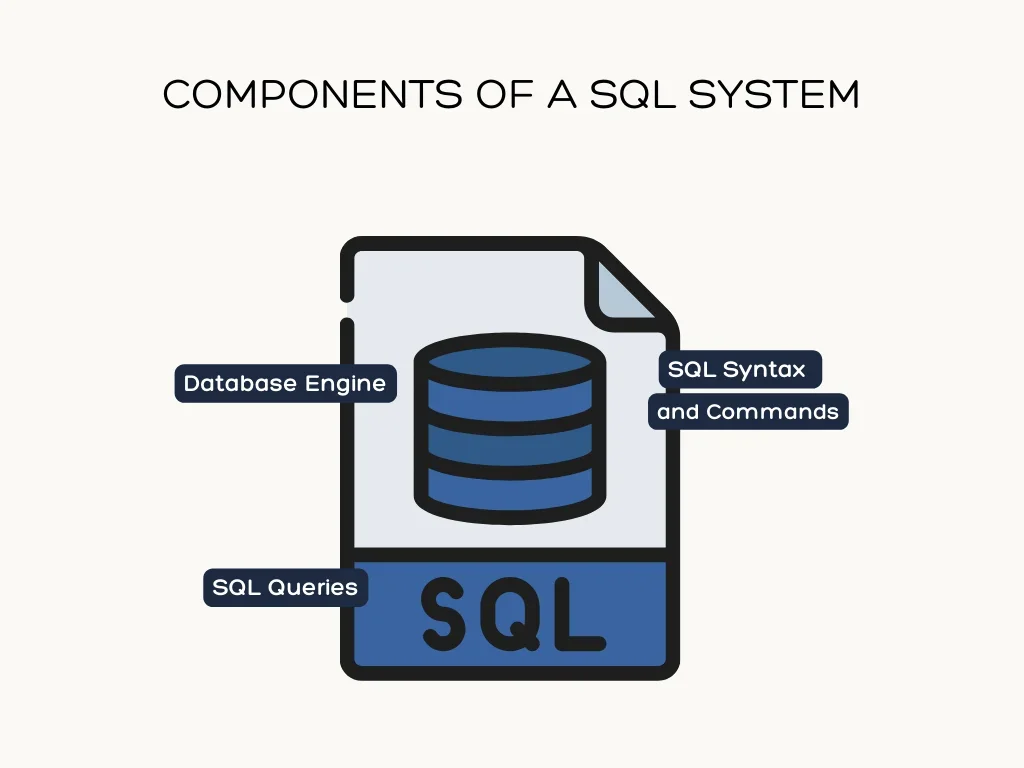
Understanding the components of a SQL system is crucial for mastering SQL database fundamentals. Here are the key components:
- Database Engine: The database engine is the core service for storing, processing, and securing data. It processes SQL queries and executes SQL statements. The engine can handle various databases, such as MS SQL Server, Oracle, Postgresql, and SQLite.
- SQL Queries: SQL queries interact with the database. They retrieve and manipulate data using commands like select statements, alter commands, and other DML operations. SQL queries form the backbone of data retrieval and management.
- SQL Syntax and Commands: SQL syntax and commands are essential for writing effective SQL queries. This includes understanding the select command, data definition language (DDL), data control language (DCL), and various clauses like where clause. Learning SQL syntax ensures accurate data operations and management.
Mastering SQL database fundamentals is essential for anyone working with data. It involves understanding SQL queries, commands, and database management. Learn SQL fundamentals to enhance your data management skills and explore advanced database applications.
SQL Database Fundamentals Command
Understanding SQL commands forms the foundation of mastering SQL database fundamentals. SQL, or Structured Query Language, is essential for managing and manipulating databases. Beginners must familiarize themselves with basic and advanced SQL commands to work efficiently with data.
Basic SQL Commands

Basic SQL commands lay the groundwork for database interactions. These commands help users perform essential operations on database records.
- SELECT: Use the SELECT command to retrieve data from a database. Specify the columns and tables to fetch the desired information.
- INSERT: The INSERT command adds new records to a table. Define the table and provide the necessary values for each column.
- UPDATE: Use the UPDATE command to modify existing records in a table. Specify the table, set new values for the columns, and define the updated record criteria.
- DELETE: The DELETE command removes records from a table. Specify the table and define the conditions to determine which records to delete.
Advanced SQL Commands

Advanced SQL commands enhance your ability to manage and analyze data. These commands allow complex data retrieval and manipulation.
- JOIN: JOIN combines rows from two or more tables based on a related column. JOINs include INNER JOIN, LEFT JOIN, RIGHT JOIN, and FULL OUTER JOIN.
- GROUP BY: Use GROUP BY to group rows with the same values in specified columns. This command is helpful for aggregate functions like COUNT, SUM, and AVG.
- HAVING: HAVING filter groups created by the GROUP BY clause. It can set conditions for groups, allowing for more precise data analysis.
- SUBQUERIES: A subquery, or nested query, is a query within another SQL query. Subqueries allow complex queries to be performed and return intermediate results for further processing.
Key Features of SQL Database
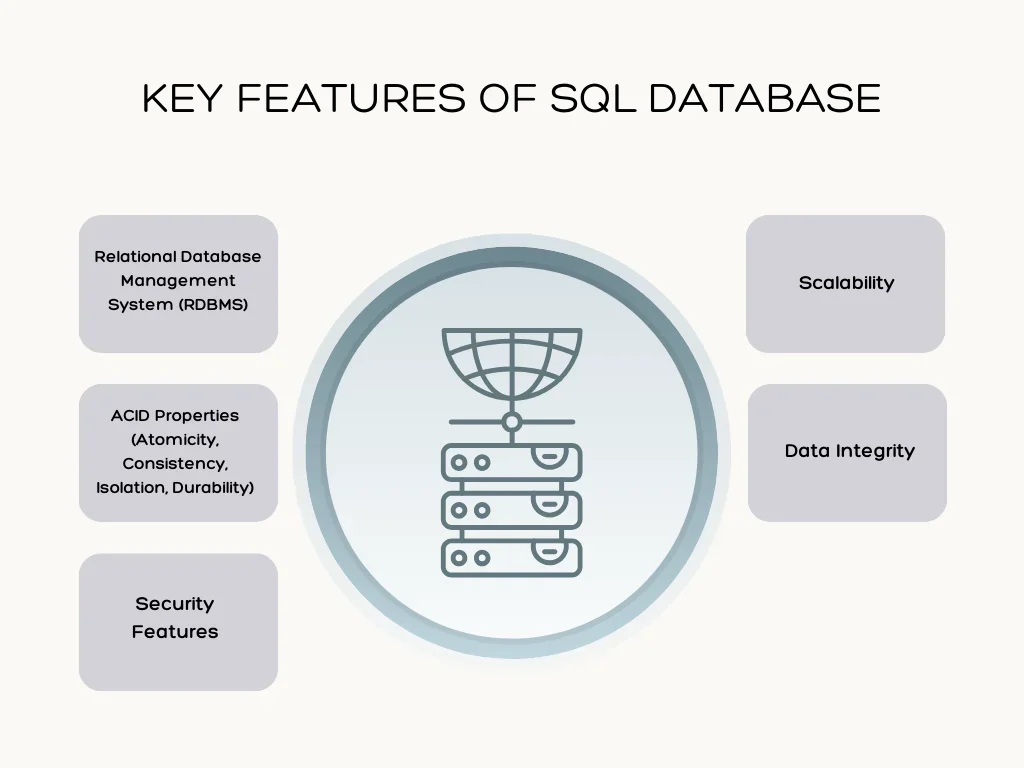
SQL database fundamentals revolve around features that ensure efficient, reliable, and secure data management. SQL databases offer several key features that make them data management and manipulation tools. Let's explore some of these features in detail.
1. Relational Database Management System (RDBMS)
SQL databases use a relational model, which organizes data into tables that relate to each other. This structure makes data retrieval efficient and straightforward. It also supports SQL commands like SELECT, INSERT, and UPDATE, which are fundamental for managing data within these tables.
2. ACID Properties (Atomicity, Consistency, Isolation, Durability)
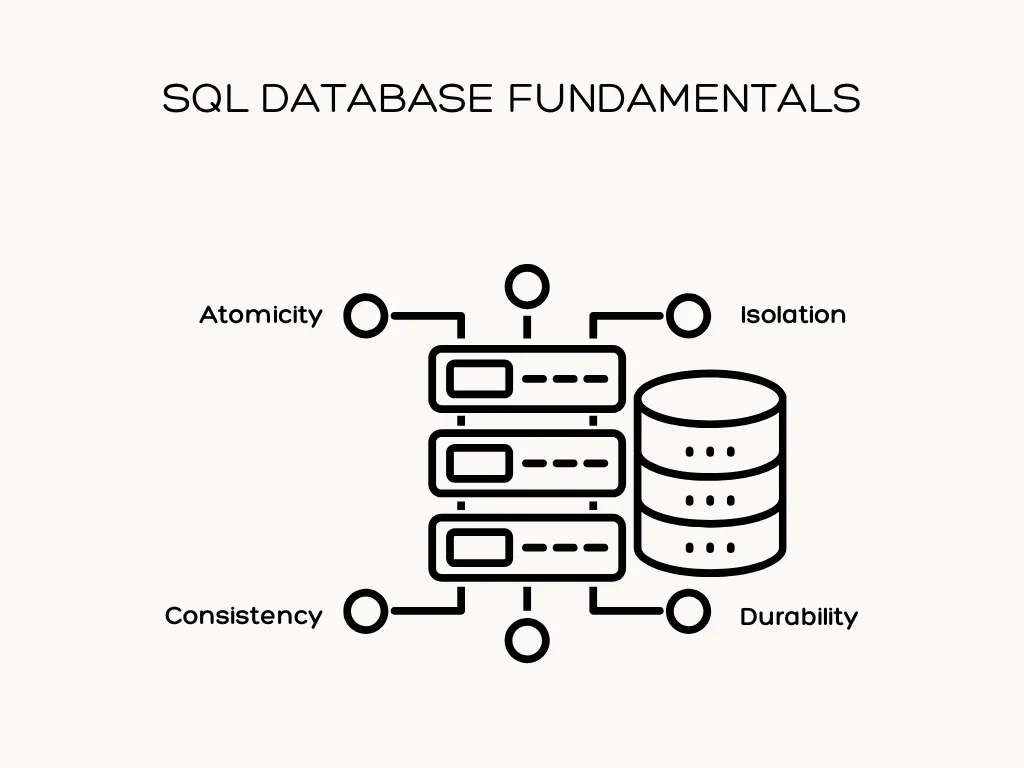
SQL database fundamentals include the ACID properties, which ensure reliable transactions.
- Atomicity: All operations within a transaction are completed successfully. If any operation fails, the entire transaction will roll back.
- Consistency: Ensures a database remains valid both before and after a transaction.
- Isolation: Transactions operate independently without interference.
- Durability: Ensures that once a transaction commits, it remains permanent, even in a system failure.
These properties maintain data integrity and reliability, which are essential for critical applications like banking and finance.
3. Security Features
SQL databases have strong security features to protect data. These include user authentication, which verifies user identities, and authorization, which controls access to data based on user roles. Encryption further secures data by converting it into an unreadable format without the proper decryption key.
4. Scalability
SQL databases offer scalability to handle growing amounts of data and increasing numbers of transactions. Horizontal scalability allows data distribution across multiple servers, while vertical scalability increases the capacity of a single server. This flexibility ensures that SQL databases can grow with the business's needs.
5. Data Integrity
Another essential aspect of SQL database fundamentals is maintaining data integrity. Constraints like primary keys, foreign keys, and unique constraints ensure the accuracy and consistency of the data. These constraints prevent duplicate records and maintain proper relationships between tables, ensuring the data remains reliable and valid.
Applications of SQL Database

Mastering SQL database fundamentals opens up a wide range of applications. It offers various applications that make it indispensable in various industries. Here, we will explore five key applications of SQL databases and explain their importance.
1. Data Retrieval
With SQL, retrieving data from databases becomes straightforward. Users can perform queries to extract specific information. For example, a company can retrieve customer data based on purchase history. The SELECT statement is crucial in this process. Users specify columns and conditions to filter the results, making data retrieval efficient and precise.
2. Data Manipulation
Manipulating data efficiently is essential for maintaining database integrity. SQL allows users to insert, update, and delete records quickly. Companies can update customer addresses or remove outdated records. The INSERT, UPDATE, and DELETE commands facilitate these tasks. Mastering data manipulation within SQL database fundamentals ensures smooth data handling and consistency.
3. Data Definition
Defining the structure of a database is a foundational aspect of SQL. SQL provides commands to create and modify database objects like tables, indexes, and views. For instance, creating a table to store customer information involves specifying columns, data types, and constraints. Using CREATE, ALTER, and DROP statements allows users to design and modify database schemas effectively.
4. Data Control
Controlling data access ensures security and proper management. SQL offers mechanisms to grant and revoke permissions. Administrators can define user roles and permissions, restricting access to sensitive data. The GRANT and REVOKE commands empower administrators to control who can read, write, or modify data. Implementing these controls within SQL database fundamentals enhances data security.
5. Data Analysis
Analyzing data for insights is another significant application of SQL. Users can aggregate and summarize data to generate reports and make data-driven decisions. SQL commands like GROUP BY and HAVING allow users to categorize and filter data based on specific criteria. This application helps organizations understand trends, patterns, and performance metrics.
SQL Database Performance Metrics
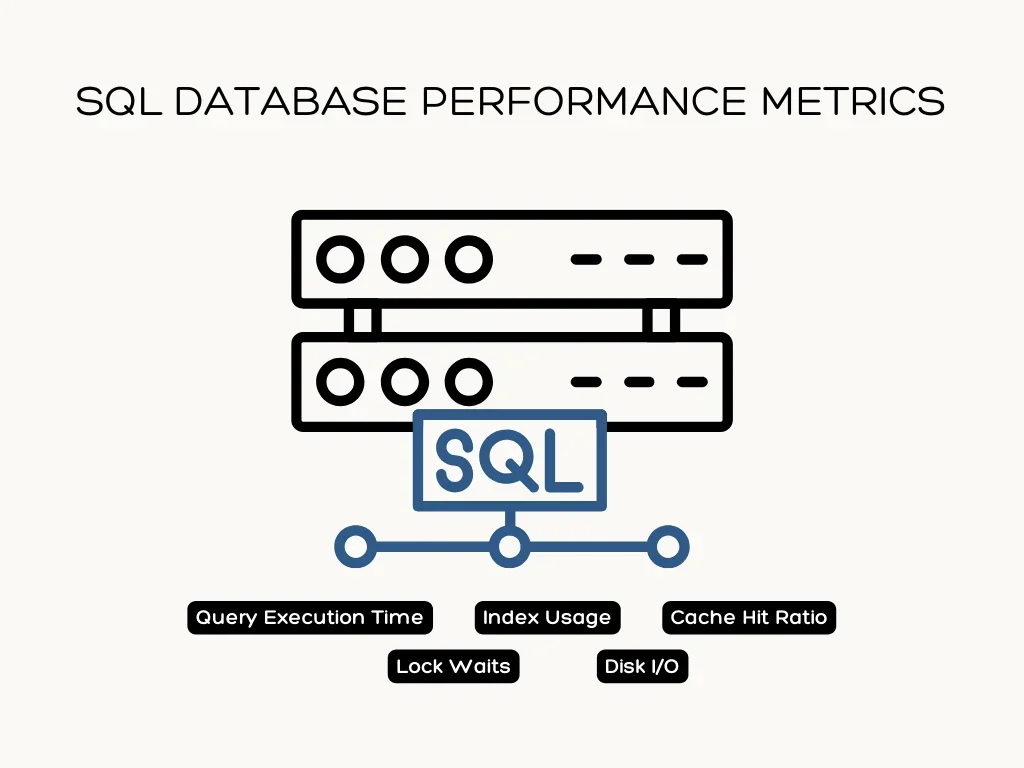
Monitoring and optimizing these performance metrics will enhance SQL database performance. Regularly check and adjust your database settings to ensure it runs efficiently. Understanding these metrics is essential for anyone looking to master an SQL database.
1. Query Execution Time
Query execution time measures how long a SQL query takes to run. Fast query execution is crucial for maintaining a responsive application. To optimize query execution time, regularly review and refine SQL queries. Use indexes to speed up data retrieval and ensure queries only select the necessary data.
2. Index Usage
Indexes improve query performance by allowing faster data retrieval. However, excessive or unnecessary indexes can slow down data modifications like inserts, updates, and deletes. Regularly monitor index usage and remove any indexes that are not beneficial. Proper index management forms a core part of SQL database fundamentals.
3. Cache Hit Ratio
The cache hit ratio shows how often requested data is found in the cache instead of fetching it from the disk. A high cache hit ratio indicates efficient use of the cache, reducing the need for slower disk access. Improve the cache hit ratio by allocating sufficient memory for caching and tuning cache settings.
4. Lock Waits
Lock waits occur when one query waits for another to release a lock on a database resource. High lock wait times can lead to slow performance and potential deadlocks. To reduce lock waits, optimize transactions to be as short as possible and use appropriate isolation levels. Understanding and managing lock waits is essential for mastering SQL database fundamentals.
5. Disk I/O
Measuring disk I/O speed involves reading and writing data to the disk. High disk I/O can slow database performance. Monitor disk I/O and optimize it by ensuring efficient storage architecture, using faster disks (like SSDs), and reducing unnecessary data writes. Proper disk I/O management is a critical aspect of SQL database fundamentals.
5 Popular SQL Database Systems
Understanding SQL database fundamentals involves choosing the right tool for your specific needs. These systems provide various features and capabilities, catering to different needs and preferences. Here are five popular SQL database systems:
1. MySQL
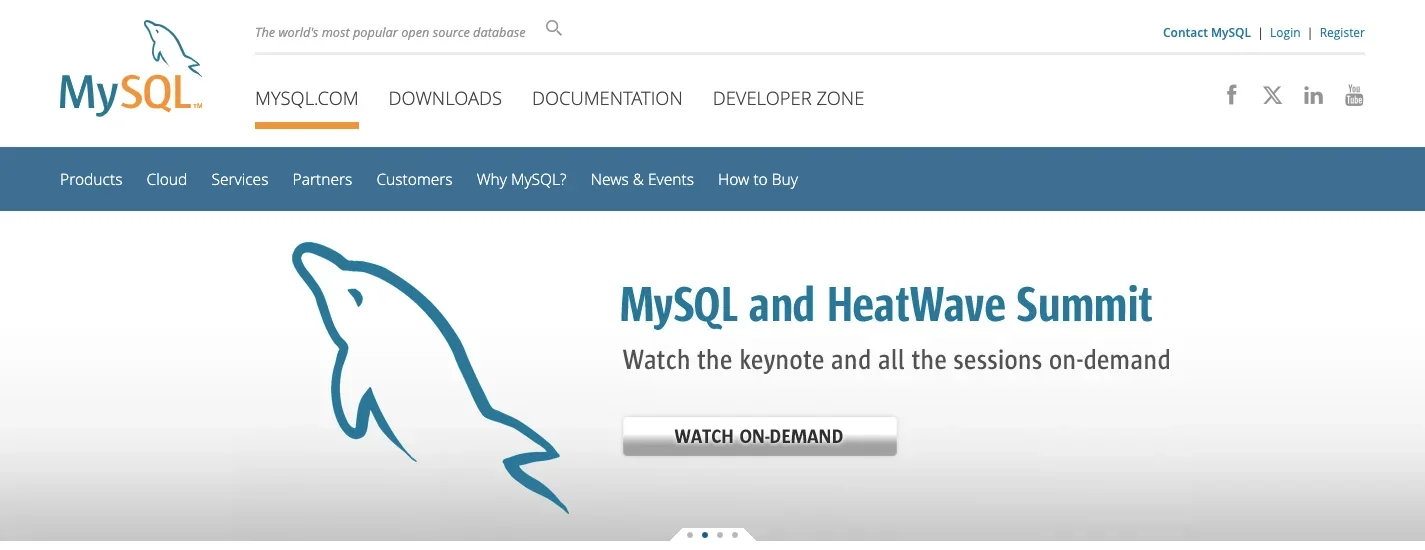
MySQL, an open-source relational database management system, is widely used across various applications. Its flexibility and ease of use make it a favorite among developers and businesses.
Notable Features of MySQL
- Multiple storage engines.
- Robust data security and protection.
- High-performance scalability.
Web applications, data warehousing, and e-commerce sites frequently use MySQL. Its compatibility with various platforms makes it versatile for many development environments.
2. PostgreSQL
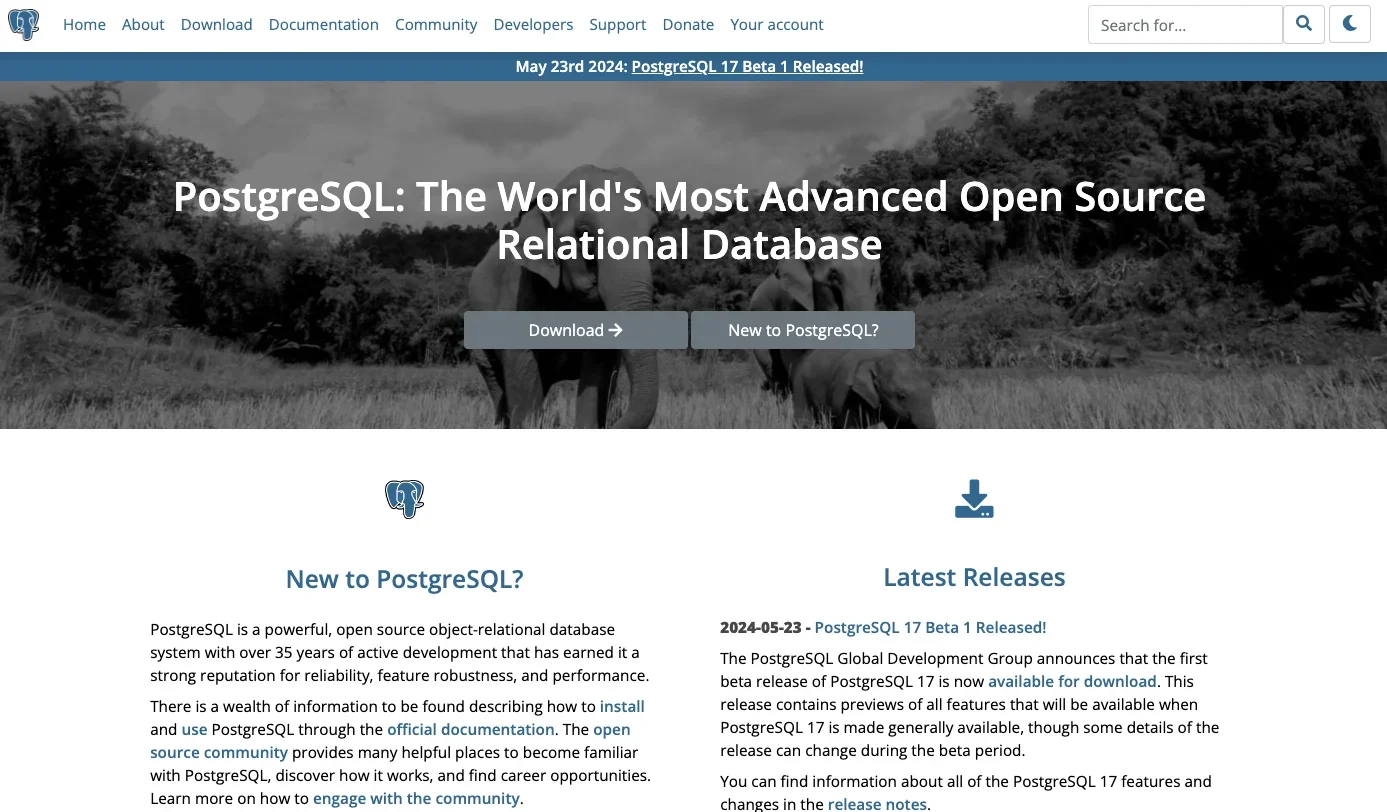
PostgreSQL is an advanced open-source database system focused on scalability and SQL compliance. It efficiently supports complex queries and large databases.
Notable Features of PostgreSQL
- Advanced data types (JSON, XML, arrays).
- Full ACID compliance and transactions.
- Extensible with custom functions and data types.
PostgreSQL finds use in applications requiring complex queries and large datasets. Its support for advanced data types makes it suitable for scientific and analytical purposes.
3. SQLite
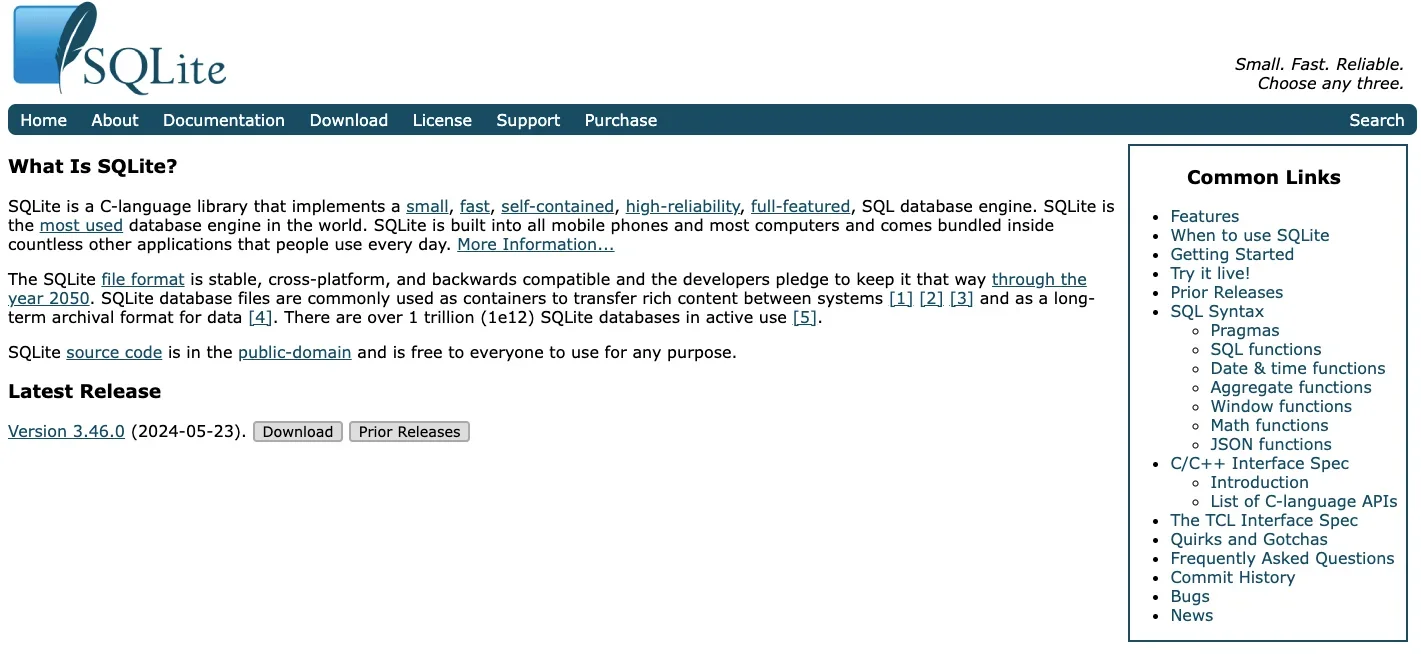
SQLite, a self-contained, serverless SQL database engine, offers simplicity and ease of integration. Its lightweight configuration makes it ideal for embedded applications and mobile devices.
Notable Features of SQLite
- No server setup or configuration is needed.
- Efficient and compact storage.
- Cross-platform compatibility.
SQLite is used in mobile applications, small- to medium-sized websites, and local data storage solutions. Its minimal setup and low resource consumption make it a developer's go-to choice.
4. Microsoft SQL Server

Microsoft created Microsoft SQL Server, a relational database management system, for enterprise-level applications. It integrates well with other Microsoft products and offers robust performance and security.
Notable Features of Microsoft SQL Server
- Advanced security (encryption, access control).
- Comprehensive management tools and services.
- High availability and disaster recovery options.
Large enterprises, financial institutions, and organizations relying on Microsoft technologies use SQL Server. Its robust security and integration capabilities make it ideal for critical applications.
5. Oracle Database

Oracle Database is a powerful and scalable relational database system that suits large-scale applications and complex workloads. It offers extensive features and support for various data models.
Notable Features of Oracle Database
- High availability and scalability for large datasets.
- Advanced analytics and machine learning capabilities.
- Comprehensive security and compliance.
Oracle Database is used by large corporations, data centers, and applications requiring high performance and reliability. Its extensive feature set supports complex data management and analysis tasks.
Key Takeaway
Understanding SQL database fundamentals is essential for anyone working with data. It lays the foundation for managing and manipulating databases efficiently. As you delve into SQL, remember that continuous learning and practice are crucial. Regularly working with SQL commands and queries will improve your skills and understanding of database systems.
SQL programming languages are powerful tools for database work. They enable you to retrieve, insert, update, and delete data precisely. Mastering these commands helps you interact with databases more effectively, leading to better data management and analysis. Familiarity with how SQL works also opens doors to more advanced database techniques and optimization strategies.
Are you ready to improve your SQL skills? Sign up for the Aloa email list. Aloa provides valuable resources, tutorials, and tips to help you master SQL database fundamentals and other essential programming languages. Stay updated and keep learning with Aloa.

